[ad_1]
University News | December 29, 2021
This article was published in the Autumn 2021 issue of Litterae Populi. The full issue can be found here.
The Hokkaido University Archives stores vast amounts of resources accumulated over the long history of Hokkaido University, which was initially founded in 1876 as Sapporo Agricultural College. The Archives also exhibits these materials and allows public access to communicate the historical appeal of the University.
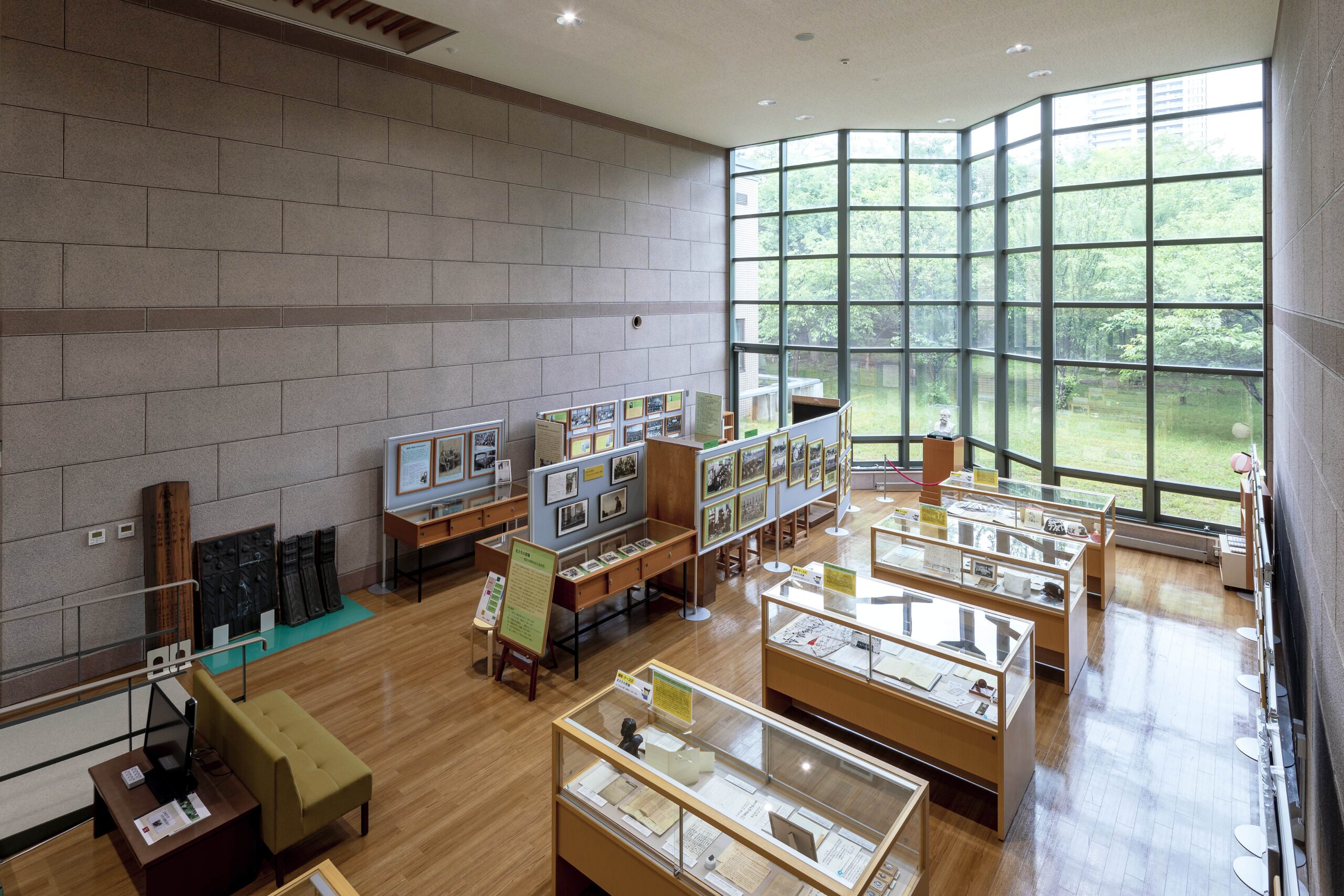
Hokkaido University Archive’s exhibition hall with an open atmosphere.
Head west in front of the Clark Memorial Student Center on the south side of the Sapporo Campus, and you will find a beautiful flowerbed. The building with the triangular roof across from the flowerbed is the Hokkaido University Archives. When the Archives was established, its materials were housed in the Central Library building of the University Library, but the Archives relocated in February 2016 to the current building, which had been previously used as the International Student Center. Entering the building, you will find a glass wall in front of you, with a white bust of Dr. William S. Clark coming into sight across the well-lit Exhibition Hall.
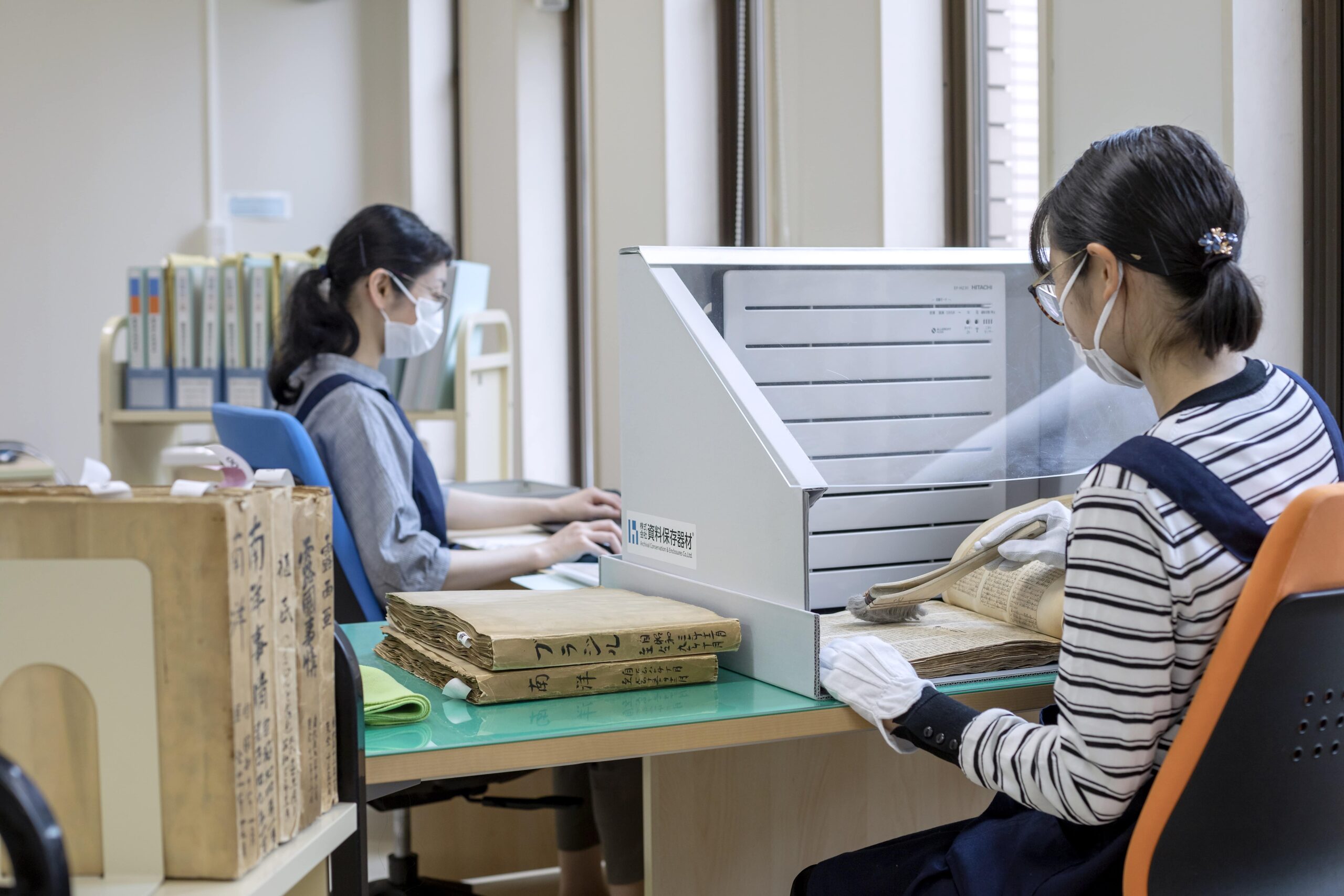
The member of the staff in the foreground of the photo is cleaning collected resources. The member of the staff in the background is cataloging resources. The resources preserved in the Archives can be searched on the Hokkaido University Archives website.
The Archives was established 16 years ago. Discussions on its possible establishment began on campus when project members for the compilation of the 125-year chronicle of the University, which had continued until 2003, felt the need for an organization charged with preserving historical records of the University for future generations. The Archives was established in May 2005, thanks in part to changes made to the public records management system following the enforcement of laws and regulations related to the Information Disclosure Act (2001). The fact that many time-honored national universities had begun to develop their archives also gave the University the push it needed. The Archives collects, organizes, preserves, and conducts research on official documents and other materials of historical significance pertaining to the University while holding exhibitions and allowing public access to the Archives for browsing and other utilization. In April 2017, the Official Documents Room and the Historical Resources Room, each staffed with experts, were established in the Archives.
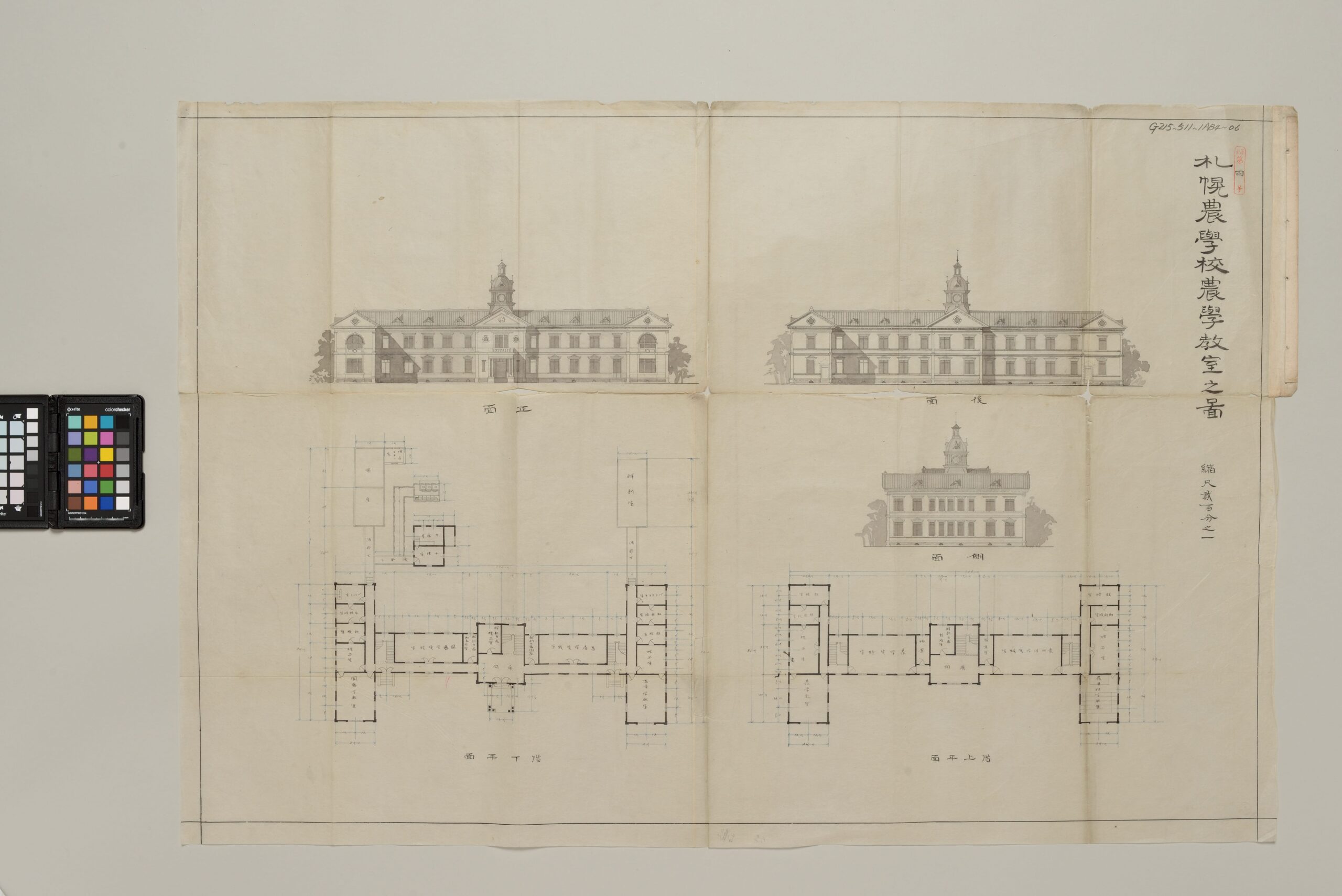
Architectural drawing for the Sapporo Agricultural College Lecture Hall for Agricultural Course.
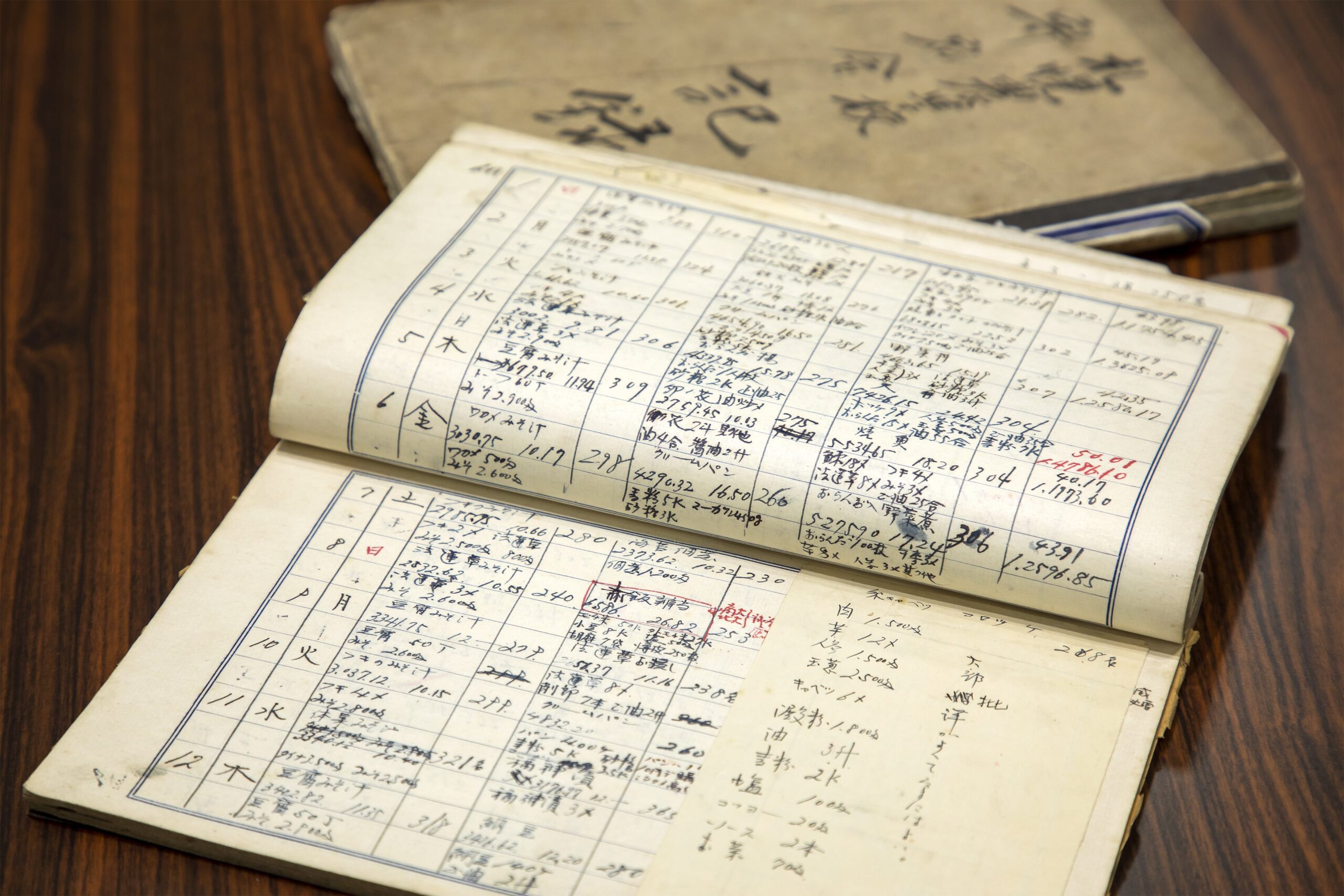
Records about the Sapporo Agricultural College Keiteki-Ryo (student dorm). Menus of dishes served at the dorm are in the foreground of the photo.
A vast array of materials that portray the history of the University
As an organization serving a function similar to the National Archives of Japan, the Official Documents Room has been designated by the Japanese government as part of the “National Archives of Japan, etc.” based on laws and regulations related to the Public Records and Archives Management Act. The Room is charged with preserving and allowing public access to official documents of historical significance. Under its management are huge numbers of official documents, including those related to the management and operation of the University (e.g., conference records; the establishment, revision and abolition of organizations), accounting (e.g., budgets, account settlements), student affairs (e.g., syllabi, student handbooks, alumni lists), research (e.g., intellectual property, subsidized projects), facilities (e.g., architectural drawings), and international exchanges (e.g., inter-university exchange agreements). Executive and Vice-President Fumihiko Yamamoto, who serves as the director of the Archives, says, “The primary mission of the Hokkaido University Archives is to secure the preservation of various official documents in order to show the history of the University.”
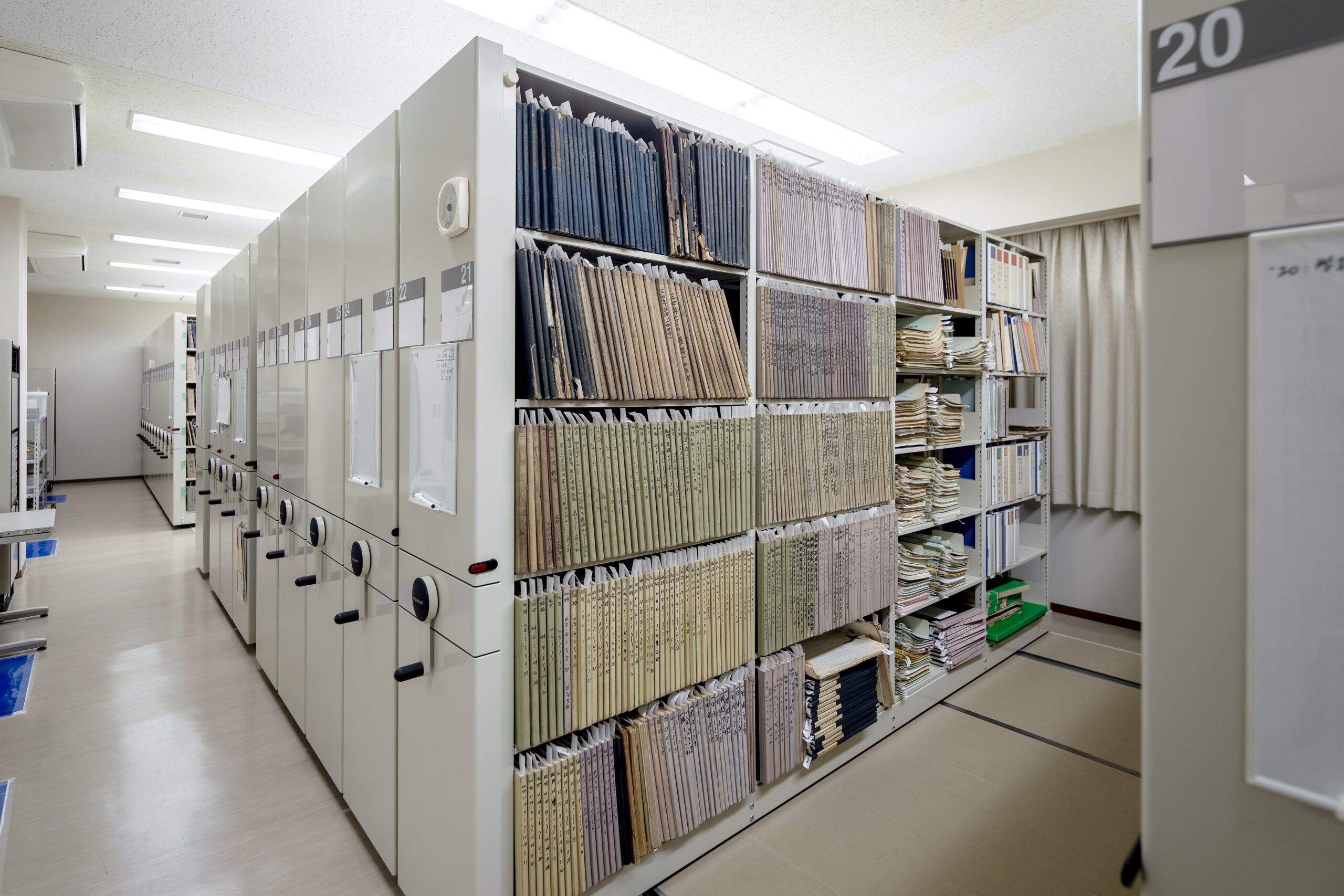
Storeroom for official documents.
Like the Official Documents Room, the Historical Resources Room has been designated as part of the “facilities holding materials of historical significance” based on laws and regulations related to the Public Records and Archives Management Act. The room is charged with collecting, organizing, preserving, and allowing public access to historical materials other than official documents. In fact, it collects all sorts of materials, whether belonging to individuals or to groups, including those related to campus life (e.g., publications by departments and student clubs, student diaries and lecture notes, Hokkaido University Festival pamphlets, teacher evaluation lists written by students) and those related to labs and alumni associations. The staff’s steadfast calls for cooperation with their resource collection via the Archives’ website and alumni newsletters have helped to unearth unexpected materials and interesting items.
The historical materials go beyond those related to well-known people such as lnazo Nitobe and Kingo Miyabe. They also include many valuable materials unrelated to famous figures—records, teaching materials, photos—that show what the University was like. Further, architectural drawings and other documents from the days of Sapporo Agricultural College have remained unchanged. Materials from immediate postwar years include the signboard from a stop on the streetcar route that once passed in front of the University and a memo about a cafeteria menu. These items, that nobody thought would ever bear historical significance, are also essential constituents of tracing the history of the University today.
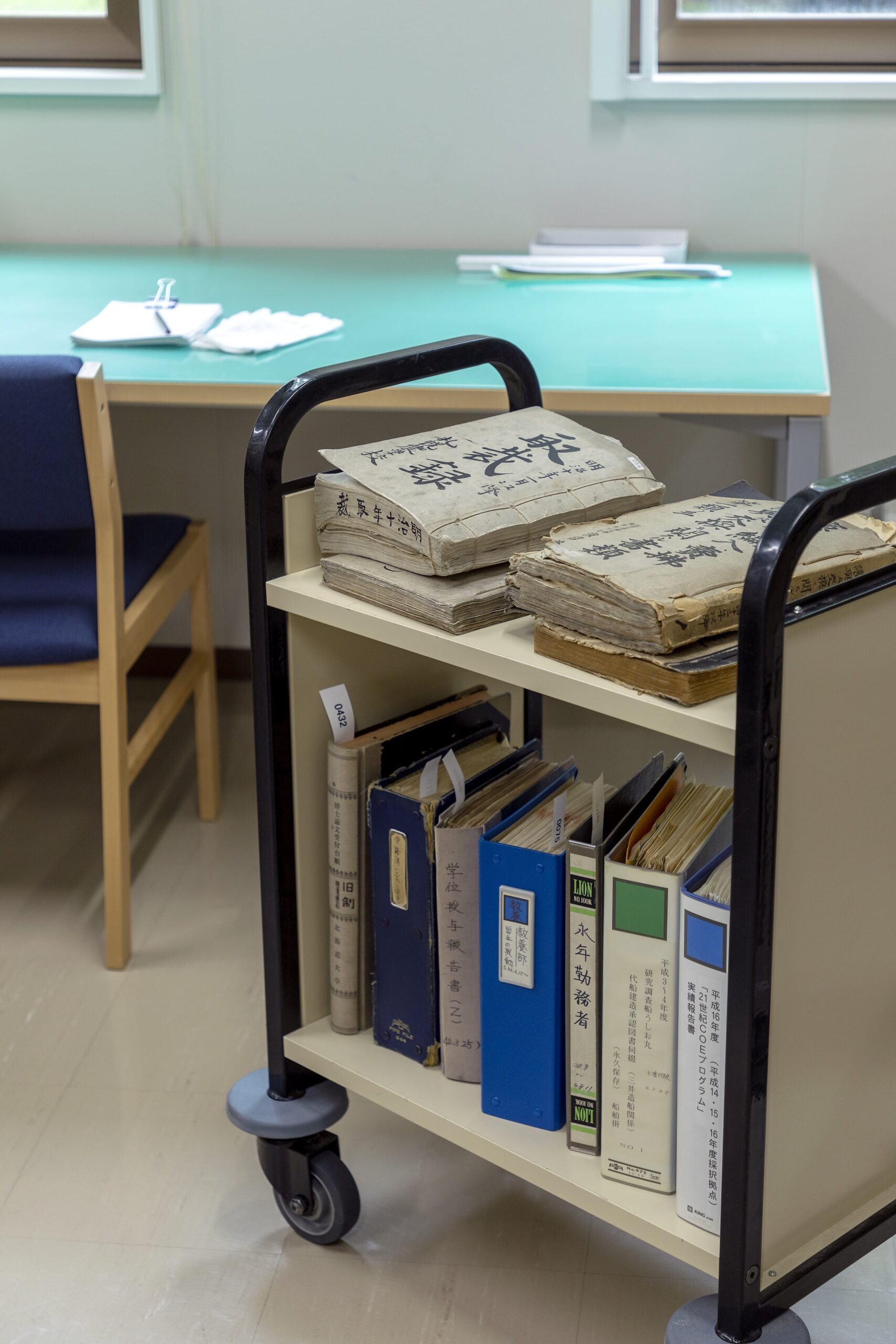
A portion of the official documents issued since the years of Sapporo Agricultural College. They are available for browsing in the reading room.
The mission of passing down the history of the University
These materials can be browsed in the Archives. The permanent exhibition, on the theme of “Groups of Hokkaido University Alumni: Protagonists in the 150-year History of Hokkaido University,” showcases photos and other materials depicting students from different periods of time, including years following the establishment of Sapporo Agricultural College, prewar and postwar years, and the years of student protests. Further, exhibits featuring the history of Enyu Night School, which was established by lnazo Nitobe and his wife Mary for child day-laborers, include a letter addressed to such children by the couple prior to the school’s opening and materials left behind by the school’s alumni.
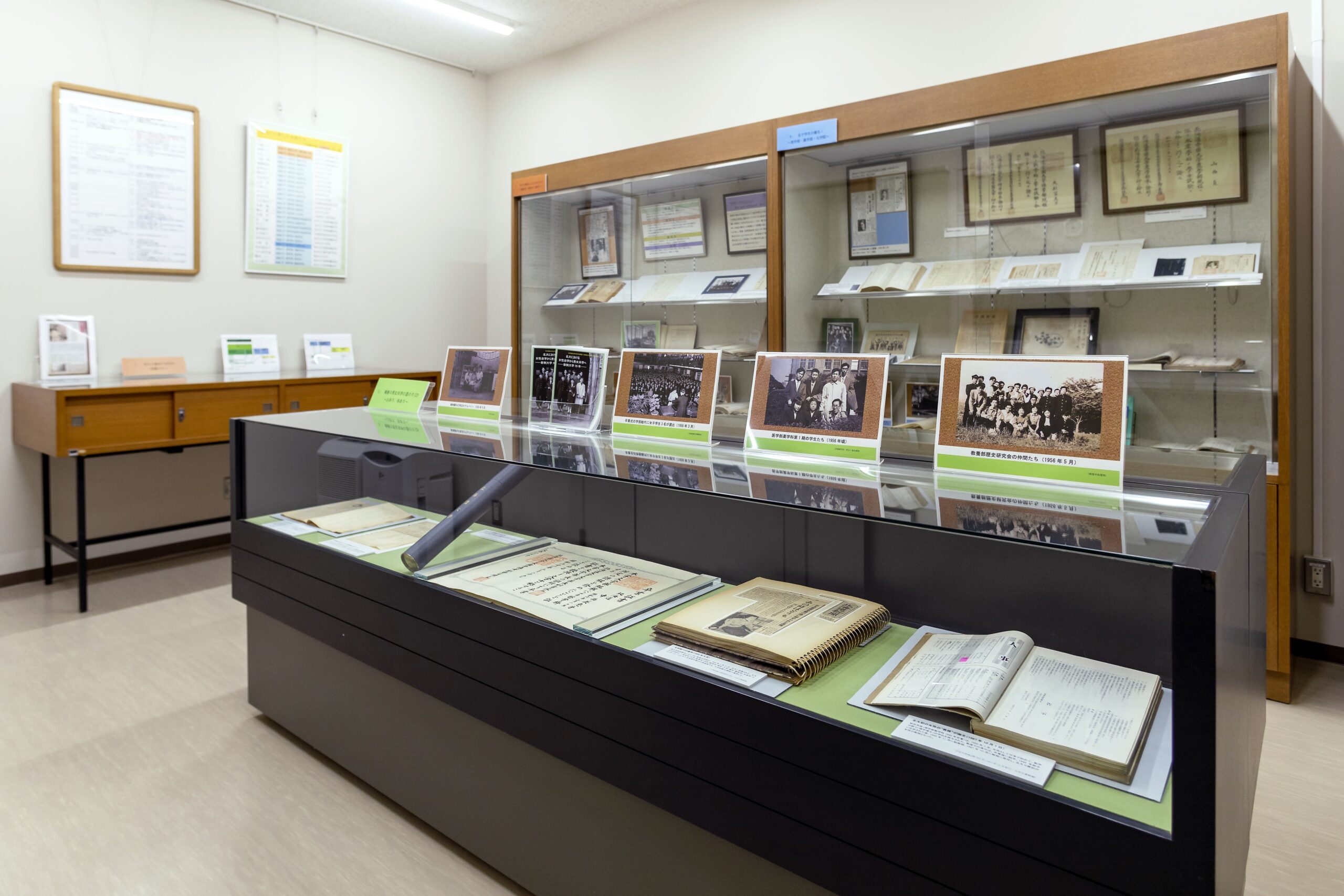
The special exhibition held in 2019 entitled “The Rocky Road from Female Self-Instruction to Coeducation at Hokkaido University: A look back 70 years after the University relaunch under the new system of education” was so popular that the Archives has decided to keep the exhibition on display until the next exhibition. (To visit the exhibition, reservations are required).
The Archives also holds special exhibitions periodically to promote exchanges with the community. Associate Professor Takaaki Inoue at the Archives stresses that not only is collecting materials a hallmark of the Archives, but so is actively advancing research. During their research, staff at times gain inspiration for specially themed exhibitions. An exhibition held in 2019 entitled “The Rocky Road from Female Self-Instruction to Coeducation at Hokkaido University: A look back 70 years after the University relaunch under a new system of education” showcased materials about Sechi Kato, who in 1918 became the first woman to study at the University (admitted not as a regular student, but as a special student entitled to take all courses and research guidance provided to regular students); materials featuring the determination of female students to further their studies when women’s university admission was still not formally acknowledged; and materials concerning twists and turns leading up to the establishment of a coed system after World War II. Going forward, the Archives plans to work with the Hokkaido University Museum to host an exhibition featuring the Miyazawa-Lane Case, a prewar case of false accusation in which the University’s response came under attack. “I’m fully aware that there are critical opinions about our university, but its mission is to convey to future generations the facts revealed by materials left behind,” says Director Yamamoto. The Archives also hosts guided exhibition tours on Open Campus days and University Festival days to raise public interest in the history of the University.
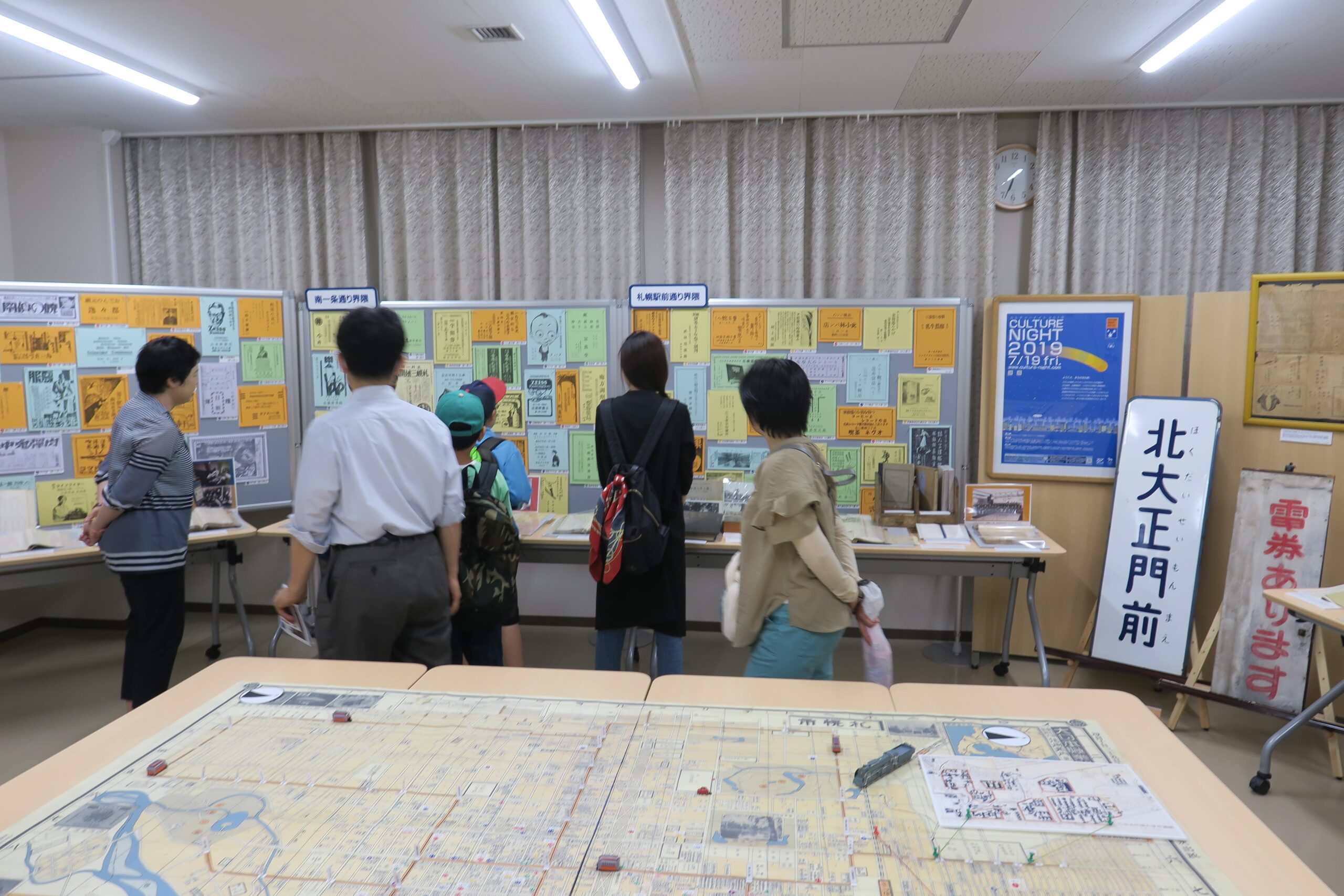
A special exhibition (in July 2019) entitled “An Exhibition on Shops around Hokkaido Imperial University as Advertised in the College Newspaper (1926 – 1945)” was held as part of a local cultural event known as Culture Night.
The Archives is a repository of the University’s history. Visitors vary in age and purpose of visit and have included people looking into the history of Hokkaido, graduates of the University who came to peruse materials from the years they were in school, people who learned the University was their grandfather’s alma mater and came to look at materials from the years of their grandfather’s attendance, TV crews who came to verify facts for a quiz show, and junior high school students who came to study the history of the University in their social studies field class. Today, due to the COVID-19 pandemic, reservations are required to browse materials in the Archives. Prospective visitors are therefore kindly advised to check the latest information in advance on the website of the Archives.
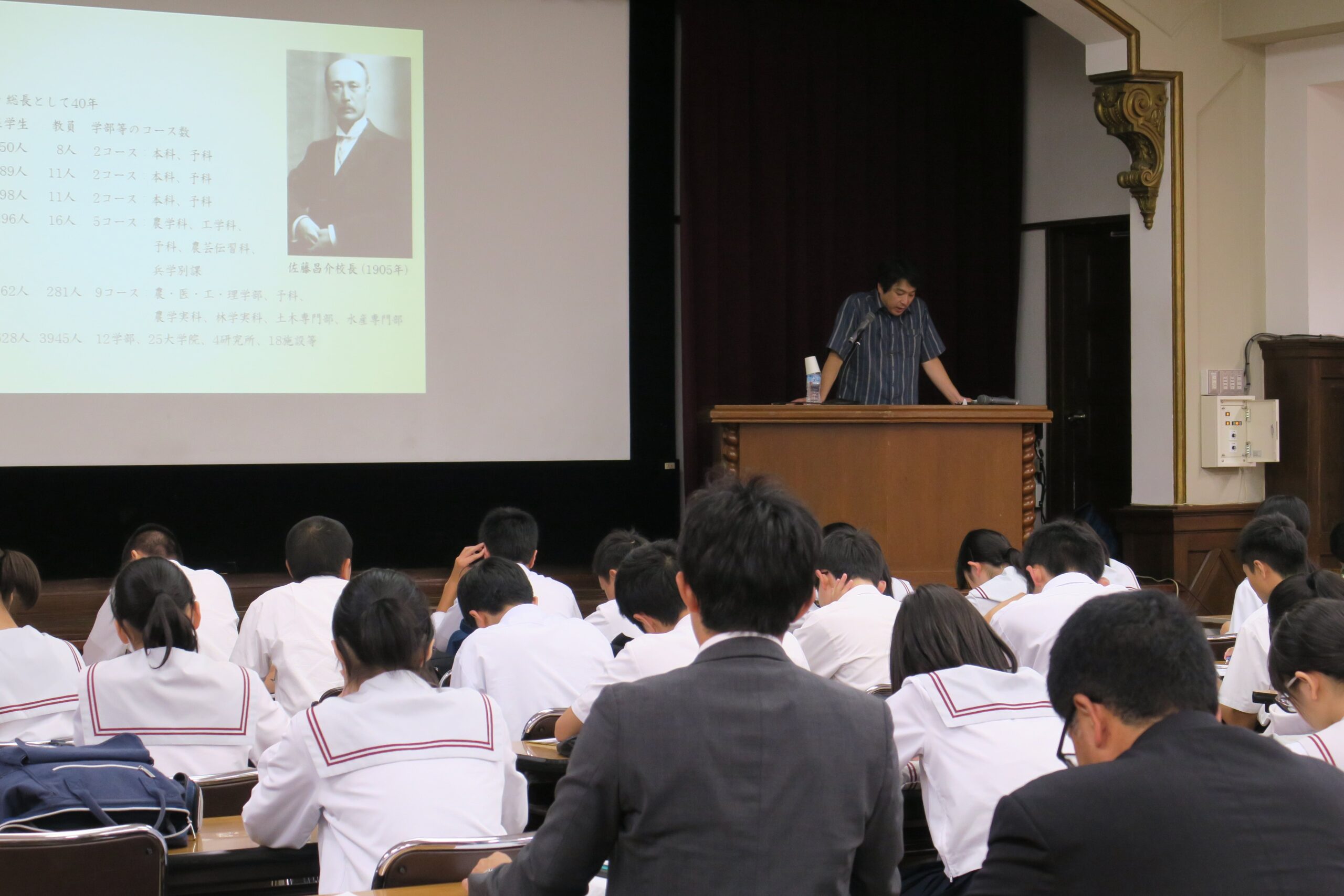
Associate Professor Inoue lectures on the history of the University to junior high school students on a school excursion (4th-floor auditorium, School of Agriculture; September 2019).
Looking toward the compilation of a 150-year chronicle of the University, and beyond
The University is set to celebrate its 150th anniversary in 2026. Playing a vital role in compiling the chronicles of the University, the Archives established the Preparatory Office for the Compilation of a 150-Year Chronicle of Hokkaido University in the 2018 academic year. The office was renamed the Office for the Compilation of a 150-Year Chronicle of Hokkaido University in the 2021 academic year, stepping up efforts to shed light on the University’s 150-year history by using various media, including records, documents, and research data.
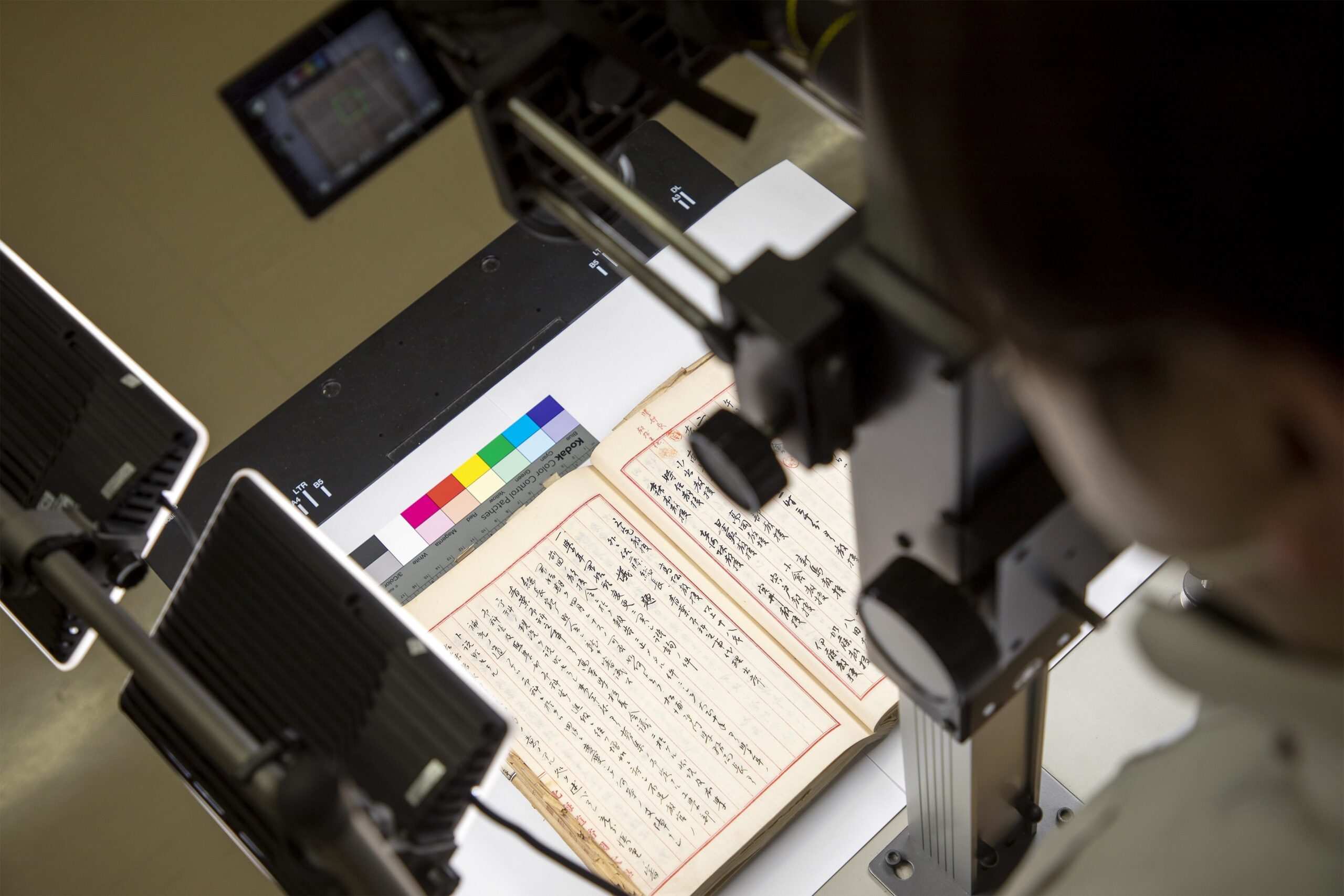
Photographing official documents of historical significance. Digitization to archive huge numbers of official documents and other materials is in the works.
For the success of the 150-Year Chronicle of Hokkaido University compilation project, it is essential to cooperate with the Hokkaido University Museum, the University Library, the Botanic Garden, and other organizations on campus. Such cooperation is nothing new, as the Archives co-hosted an exhibition featuring holdings of the Library dating from the years of Sapporo Agricultural College and historical materials in the Archives. The Archives has also worked with the Library and Botanic Garden to digitize old photographs on dry plates (glass plates for storing images akin to film photos on rolls of negatives). However, the Archives hopes to ramp up cooperation with organizations sharing the aim of contributing to the community.
With the holdings of the Archives increasing, the staff is torn between joy and distress. While they face myriad problems, including finite storage space, a shortage of personnel to organize materials, and diversifying user needs, Assistant Professor Inoue says, “I’d like the Archives to be a facility where visitors can learn all that there is to know about the history of the University.” While significant decisions on the amounts of storage space and the workload will be necessary, preserving the ambiance of olden days—for example, in the quality of paper—is also important in feeling the history of the University.
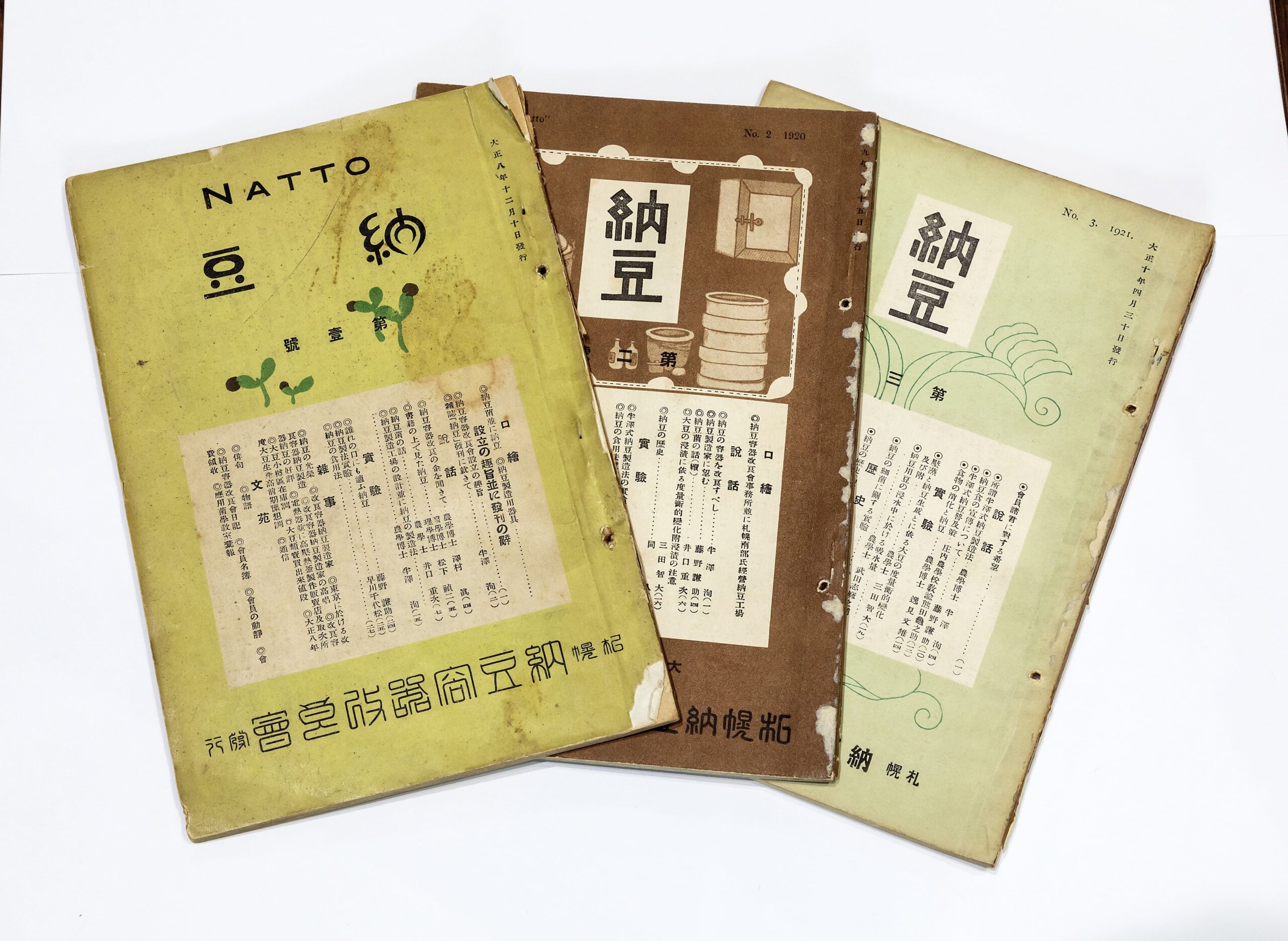
Journals entitled Natto and published by Professor Jun Hanzawa (a Doctor of Agriculture) at Hokkaido Imperial University (from the inaugural issue, published in 1919, to the third issue, published in 1921). Professor Hanzawa contributed to the dissemination of a hygienic method for producing natto (fermented soybeans) and has been known as the foremost leader on bacterial research in Japan. The history of natto production has been handed down in today’s Laboratory of Applied Mycology in the Research Faculty of Agriculture.
Today, materials prepared at the University are also being digitized. In addition to the accelerating digitization of course materials and notes due to the spread of online classes, communication in departments and student clubs increasingly take place online. Under these circumstances, determining what to leave behind for future generations and how to leave it behind is a difficult task.
Director Yamamoto says, “We hope to create many opportunities not only for visitors, but also for current students and teaching and administrative staff to learn the history of the University. I’d be more than happy if they learned about the history of the University, that was initially founded as Sapporo Agricultural College and thrived as one of the very first degree-granting institutions of higher education in Japan, so that they’ll deepen their fondness for the school to which they belong.”
Archival materials conjure up memories in many people. As visitors learn the past through historical materials, the Hokkaido University Archives plays a crucial role in passing the thoughts of our predecessors on to the future.
This article was published in the Autumn 2021 issue of Litterae Populi. The full issue can be found here.
[ad_2]
Source link

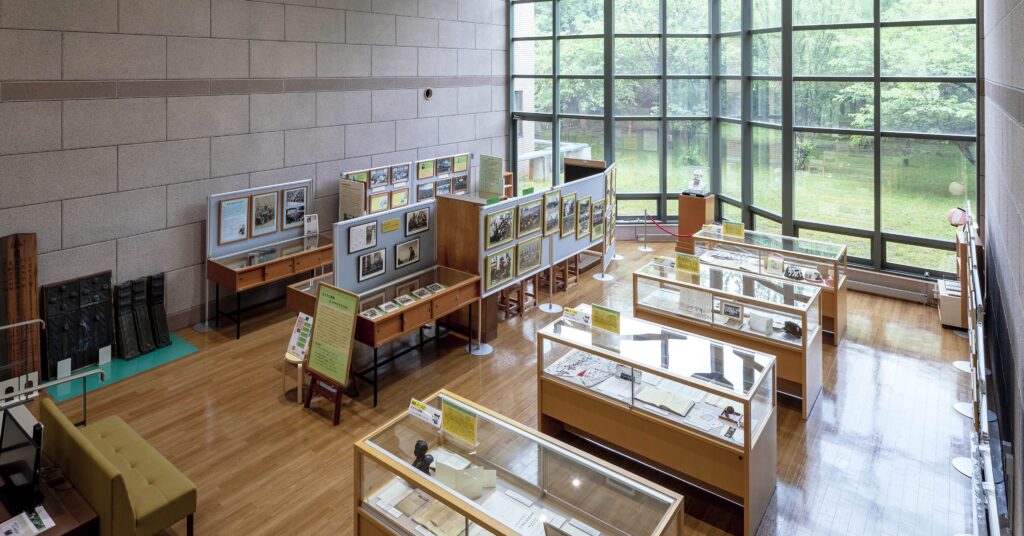
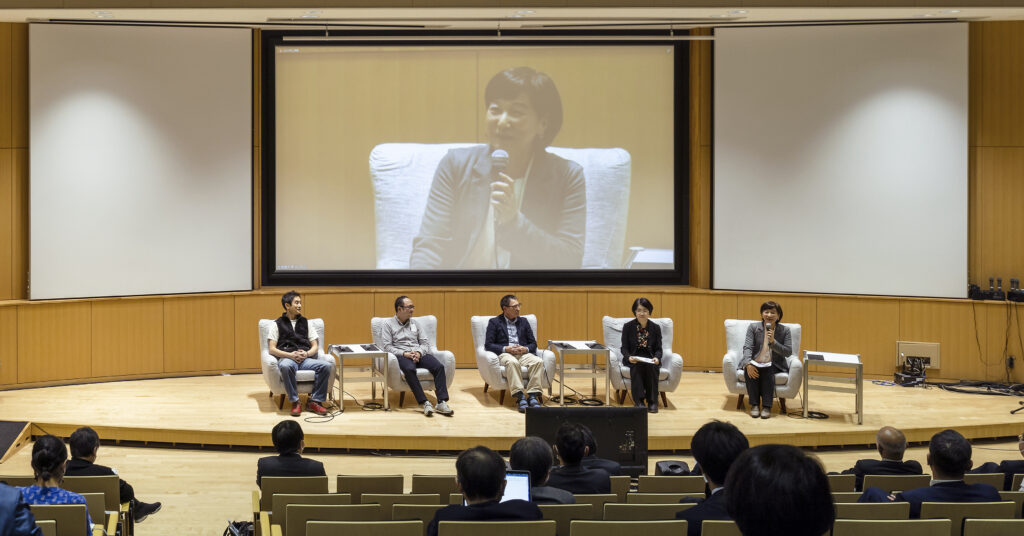

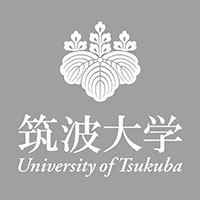

![[Sign up by July 29] 2022 Saitama City Comprehensive Disaster Prevention Training Fair [Sign up by July 29] 2022 Saitama City Comprehensive Disaster Prevention Training Fair](http://en.saitama-u.ac.jp/wp-content/uploads/2022/06/Disaster-Prevention-Training-Fair_page-0001-e1656561113802.jpg)










